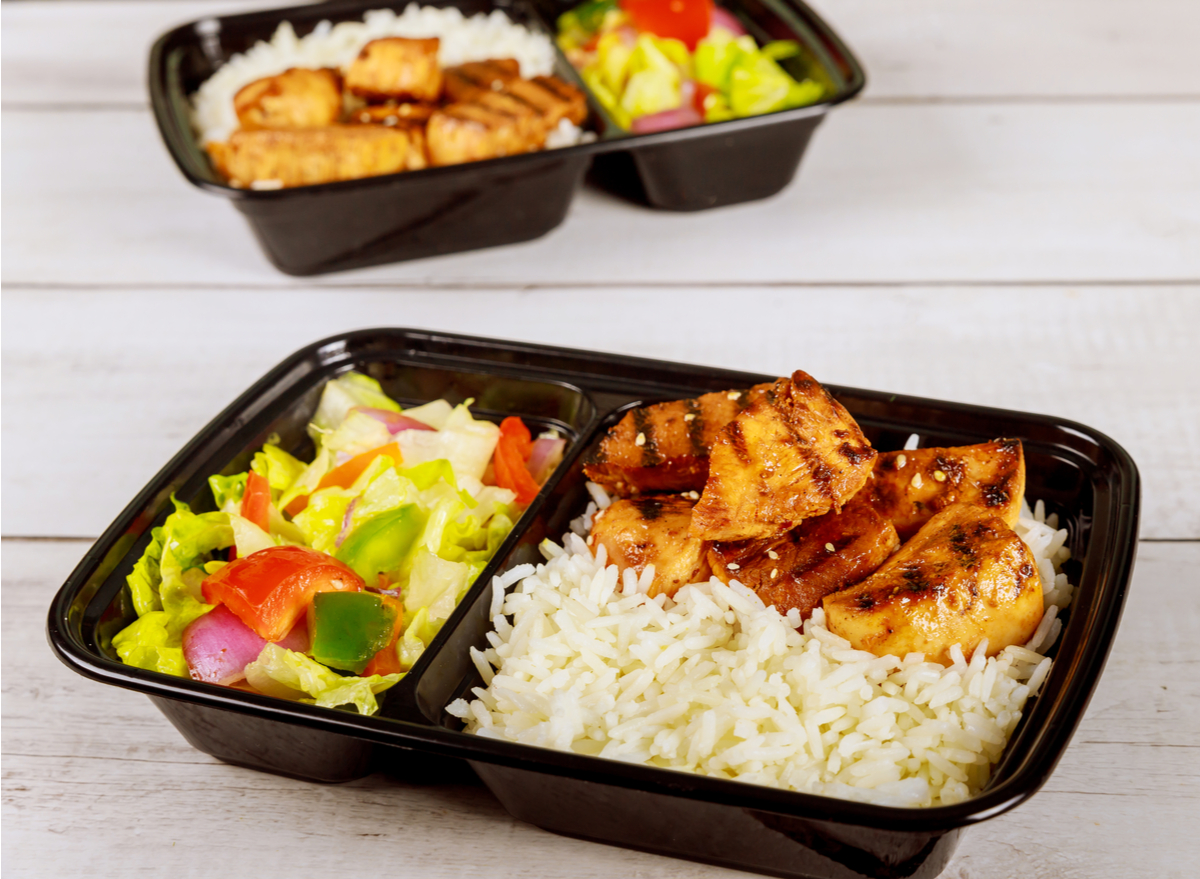This Is the #1 Most Toxic Food Packaging Right Now

In a perfect world, you could happily thank your food delivery driver, pop open your takeout container, and enjoy dinner in front of a good true-crime series without a worry in the world. Unfortunately, there’s a good chance that your burger or Chinese noodles came with a side of toxic chemicals. Especially if the containers they came in were made from a certain kind of plastic.
For more, check out 8 Fast-Food Chains With the Most Toxic Food Packaging.
That’s because the #1 most toxic food packaging is plastic that contains plasticizers such as bisphenols or phthalates, says Dr. Kelly Johnson-Arbor, MD, FACEP, FUHM, FACMT, a medical toxicologist and co-medical director of the National Capital Poison Center.
“Plasticizers make plastics more flexible and soft. I think of these chemicals when I think of products like disposable plastic takeout containers and plastic containers that are sold in grocery stores for food storage,” she explains. “These types of containers are flexible, and they get even softer when heated in the microwave.”
Some bisphenols and phthalates can act within the human body as endocrine disruptors, she explains. “This means that the chemicals can potentially affect fertility, puberty, and even cancer development.”
There’s also this: If that plastic is heated—say you’re using a microwave—these chemicals can transfer from the plastic into the food that is being heated. And given that food is processed and packaged multiple times over before it actually gets into your hands, it’s highly likely that the food we purchase does contain plasticizers.
In fact, a recent study examined ortho-phthalate and replacement plasticizer concentrations in foods and food handling gloves from a selection of fast-food restaurants in the U.S. The results? Yup, those foods contained detectable levels. Chicken burritos, cheeseburgers, and other meat products had the highest content, while cheese pizza had the lowest level of most chemicals. None were detected in French fries.
So should we be concerned? “While occasional exposure to bisphenols and phthalates is likely not harmful, long-term exposures to foods that have been heated in containers containing bisphenols and/or phthalates may be dangerous,” says Dr. Johnson-Arbor.
“Certain populations, such as young children and women of childbearing age, may want to avoid these chemicals completely, as fertility and endocrine functions may be altered by chronic exposures to these chemicals. Overall, however, there is little risk of harm to adults who use these products on an occasional basis.”
How to avoid plastics with plasticizers
While we can’t choose which takeout containers restaurants use, we can be thoughtful of the containers and food products we buy.
Look for labels and phrases like “microwave-safe,” “BPA (bisphenol-A) free,” “free of phthalates,” or “does not contain phthalates.”
“In the past, many plastic packaging items did not include declarations on whether the products contained bisphenols or phthalates. Now, since these compounds and their potential health effects are reported more and more in the media, many companies label their products as ‘BPA free’ or ‘free of phthalates,'” says Dr. Johnson-Arbor.
If you’re concerned about your takeout container, transfer that food onto a dish as soon as you can—and avoid nuking the container it came in.